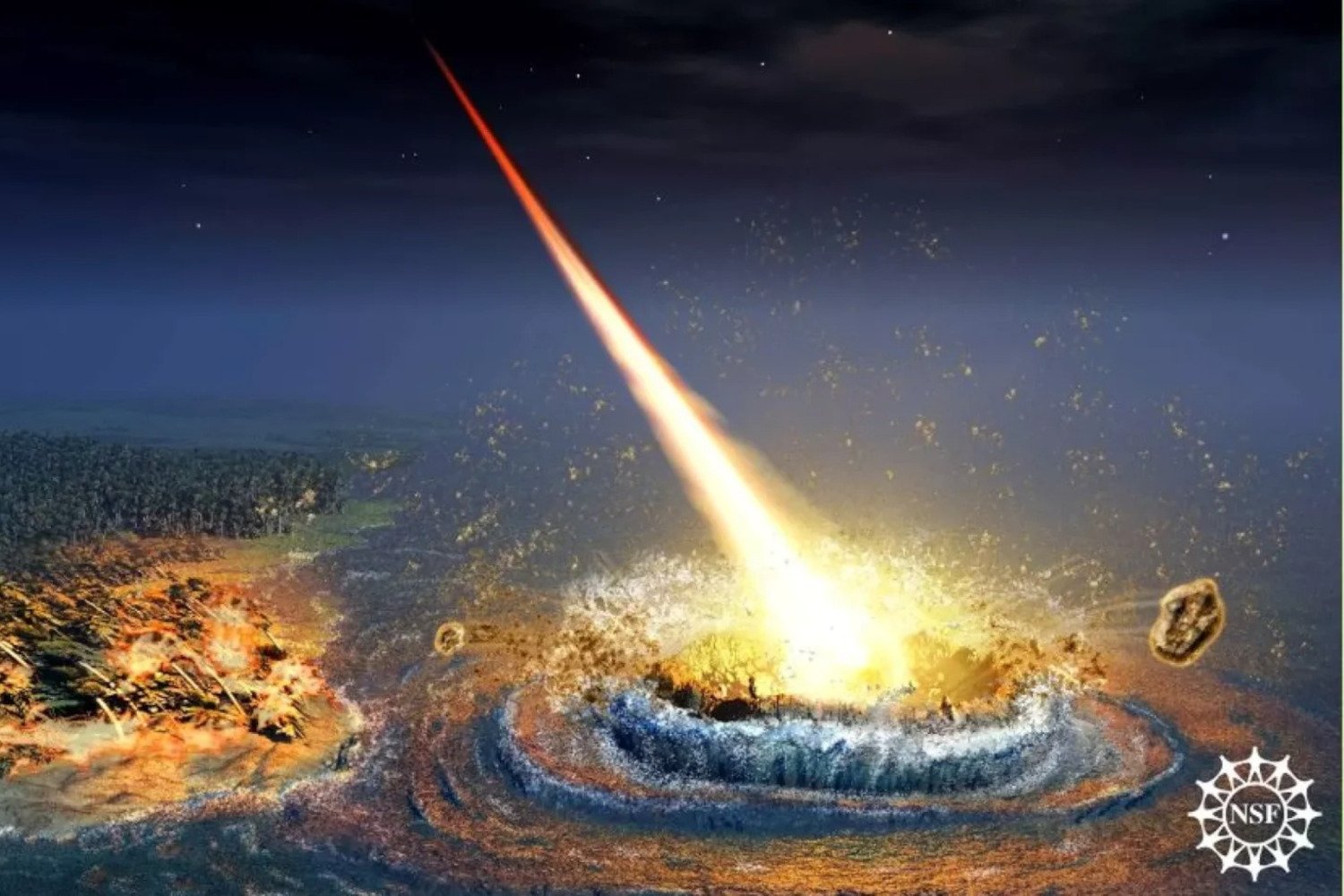Science
Scientists Uncover Ancient Tsunami Evidence from Asteroid Impact

A team of geologists has discovered significant evidence linking an ancient asteroid impact to a tsunami that occurred approximately 35 million years ago. This pivotal event took place near present-day Cape Charles, Virginia, when a small asteroid, traveling at a remarkable 40,000 miles per hour (64,373 kilometers per hour), struck the Atlantic Ocean. The impact created a large crater buried beneath the waters of Chesapeake Bay, which remains one of the most well-preserved craters on Earth.
In a recently published study in the journal Southeastern Geology, researchers have documented findings from an investigation in Moore County, North Carolina, located about 240 miles (386 kilometers) south of the Virginia crater. This study sheds light on the far-reaching consequences of the asteroid collision, providing new insights into the geological aftermath.
Geological Layers Reveal Impact’s Legacy
During their exploration, the geologists uncovered four distinct layers of rock within a formation measuring just over one yard thick. The first layer, approximately 17 inches (43 centimeters) thick, consists of sandy clay enriched with carbon glass and rock fragments. Importantly, this layer contains 14 to 18 parts per billion of iridium, a rare element frequently associated with meteorite impacts.
The second layer, measuring about 3 inches (9 centimeters), comprises silt and loosely bound aggregates of quartz and carbon, with 2 to 6 parts per billion of iridium present. The third layer is a mix of soil and seafloor fragments, about 2 inches (6 centimeters) thick, while the fourth layer consists of roughly 6 inches (15 centimeters) of coarse sand, likely deposited by a tsunami.
The geological composition of these layers initially posed questions, but the researchers successfully traced them back to the asteroid impact that reshaped the region millions of years ago.
The Impact’s Catastrophic Effects
When the asteroid struck Earth, it generated a hypersonic shock wave that devastated ecosystems for hundreds of miles, depositing molten debris across a vast area stretching from Massachusetts to Barbados. While scientists had long speculated about the creation of a massive tsunami due to the impact, concrete evidence had remained elusive until now.
This latest study provides a clearer picture of the event’s aftermath. The first rock layer captures the immediate impact, rich with ejecta and carbon-laden debris that settled shortly after the collision. The second layer represents finer particles ejected as the plume dissipated. The third layer records the inland surge of seawater and sediment, and the fourth layer indicates the eventual refilling of the channel with clean sand and gravel.
These findings highlight the extensive impact of the Chesapeake Bay event and its ability to reshape the surrounding landscapes. This single asteroid collision, occurring millions of years ago, demonstrates the profound influence such events can have on our planet’s geological history. Through this research, scientists continue to unravel the complexities of Earth’s past, revealing how ancient cataclysms have molded the regions we inhabit today.
-

 Lifestyle3 months ago
Lifestyle3 months agoLibraries Challenge Rising E-Book Costs Amid Growing Demand
-

 Sports3 months ago
Sports3 months agoTyreek Hill Responds to Tua Tagovailoa’s Comments on Team Dynamics
-

 Sports3 months ago
Sports3 months agoLiverpool Secures Agreement to Sign Young Striker Will Wright
-

 Lifestyle3 months ago
Lifestyle3 months agoSave Your Split Tomatoes: Expert Tips for Gardeners
-

 Lifestyle3 months ago
Lifestyle3 months agoPrincess Beatrice’s Daughter Athena Joins Siblings at London Parade
-

 World3 months ago
World3 months agoWinter Storms Lash New South Wales with Snow, Flood Risks
-

 Science3 months ago
Science3 months agoTrump Administration Moves to Repeal Key Climate Regulation
-

 Science2 months ago
Science2 months agoSan Francisco Hosts Unique Contest to Identify “Performative Males”
-

 Business3 months ago
Business3 months agoSoFi Technologies Shares Slip 2% Following Insider Stock Sale
-

 Science3 months ago
Science3 months agoNew Tool Reveals Link Between Horse Coat Condition and Parasites
-

 Sports3 months ago
Sports3 months agoElon Musk Sculpture Travels From Utah to Yosemite National Park
-

 Science3 months ago
Science3 months agoNew Study Confirms Humans Transported Stonehenge Bluestones









